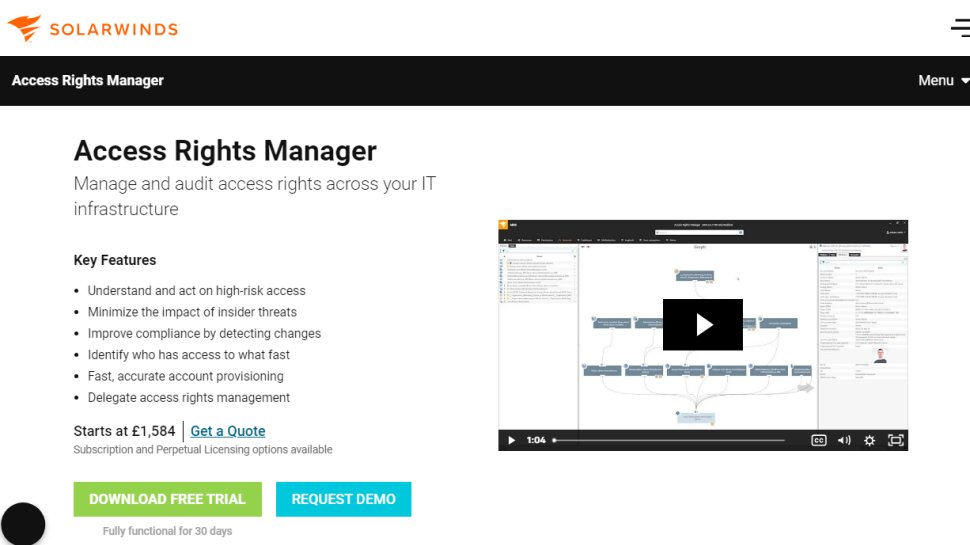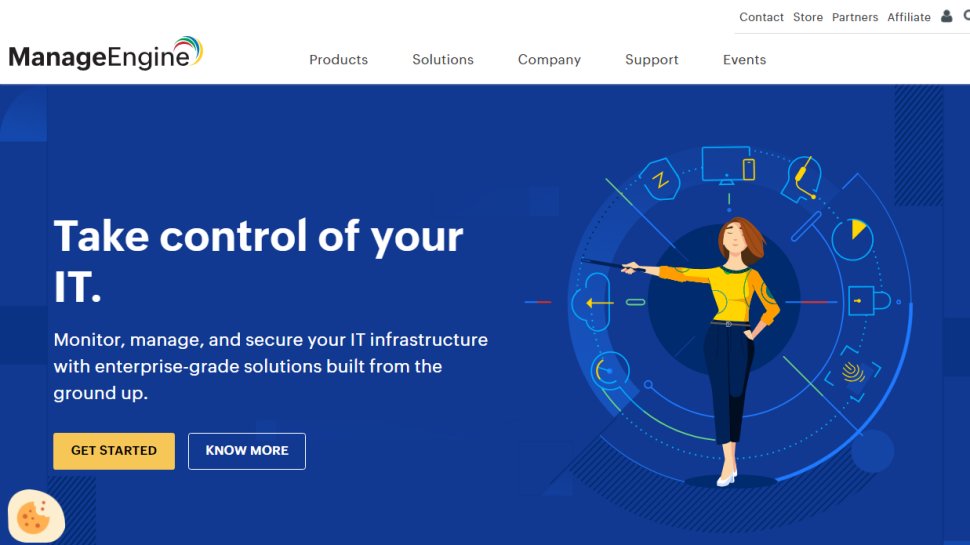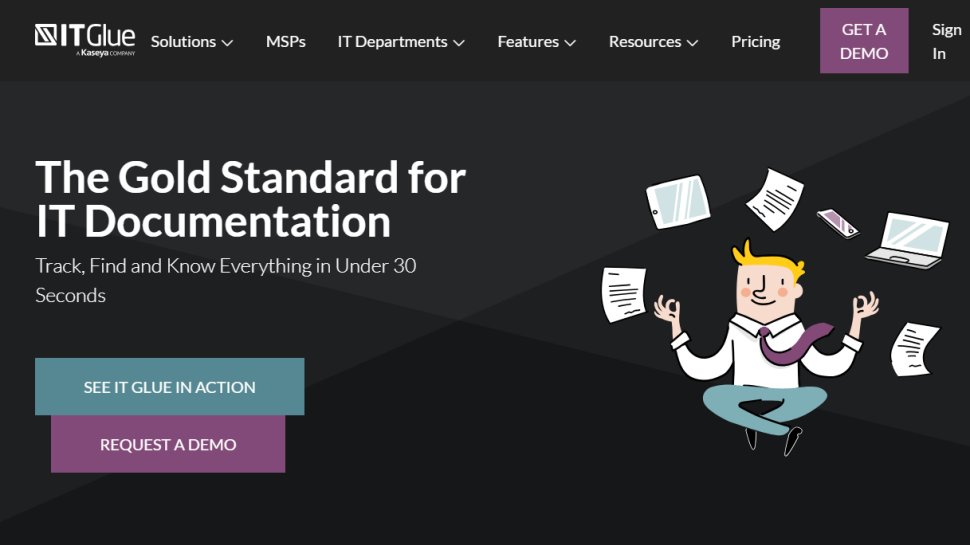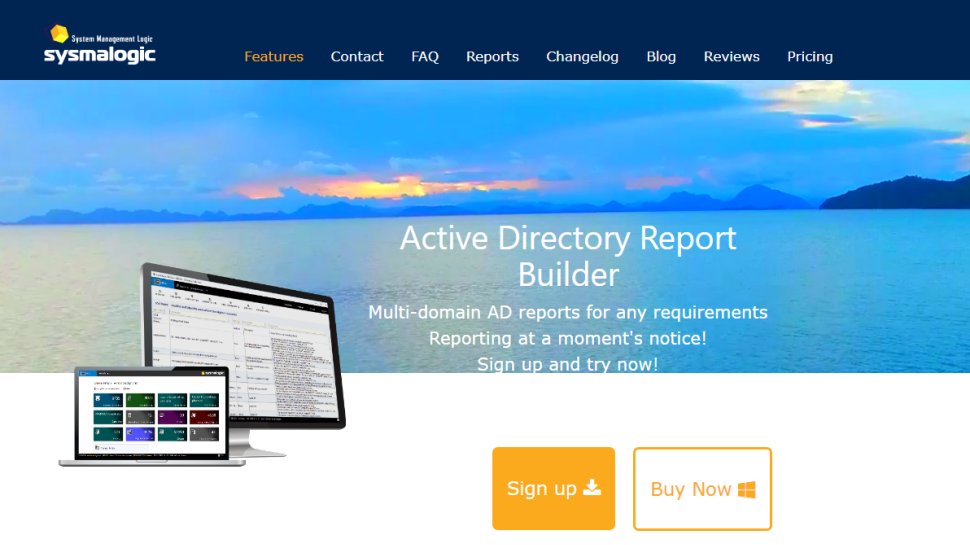Best Active directory documentation tool of 2025
Control access to your IT resources and monitor usage

We list the best Active directory documentation tools, to make it simple and easy to control access to your IT resources and monitor usage.
Active Directory is a popular directory service developed by Microsoft for Windows servers. This tool authenticates and authorizes users within a Windows server network. It enables enterprises to control access to their IT resources and monitor usage thoroughly.
For example, when a user logs into a computer, Active Directory can check their credentials to determine whether it's an administrator or a typical user. It allows IT teams to monitor their organization's IT resources and ensure that only authorized users access their network.
Active Directory can be difficult to organize and manage. That’s why many IT software vendors have built documentation tools that work seamlessly with the platform. These tools connect to a user’s Active Directory domain to read data, extract it, and present it in a format that they can easily understand.
These documentation tools make it easy for enterprises to keep accurate records of their Active Directory infrastructure and map the complicated relationships between different users and devices. The idea is that a layman can look at the documentation and easily understand the organization’s Active Directory infrastructure.
We tested different documentation tools to select the best ones. We chose five finalists based on important factors including features, pricing, customer support, ease of use, etc.
We've featured the best identity management software.
The best Active directory documentation tool of 2025 in full:
Why you can trust TechRadar
Best Active directory documentation tool overall

1. SolarWinds Access Rights Manager
Reasons to buy
Reasons to avoid
SolarWinds is a popular IT management software vendor. Its Access Rights Manager tool enables organizations to manage and audit access rights for their IT tools. It offers an interface that takes the place of Active Directory's front end. You can use the SolarWinds Access Rights Manager to manage multiple Active Directory instances.
This tool allows network administrators to organize devices and users into groups that they can easily manage. They can add, remove, or update permissions for respective groups with the click of a button. They can also update and push security policies to user groups at the click of a button.
This Access Manager comes with pre-built templates that make it easy to create new users. It also allows network administrators to generate Active Directory reports automatically, ranging from simple reports for management to rigorous and detailed reports for auditors.
This service is web-based, so it’s easy to manage. However, it has a pretty complex interface that’ll require time to learn the ins and outs. Another drawback is that it’s an expensive tool, starting from $2,000 annually. You can take advantage of the 30-day free trial to test the features before making your final decision.
Best free Active directory documentation tool

2. José Active Directory Reporting
Reasons to buy
Reasons to avoid
José Active Directory Reporting is a free and open-source tool, unlike others on this list. You don't need to pay a dime to use it, which is its main advantage. You can download it online. It’s open-source, so you can make changes to the code if you wish.
José is a script-based tool. It reads data about your Active Directory domain and writes the data to a report file. The data is written in an HTML file that you can use for analysis and documentation. You can configure the reports via a command line interface.
José supports different report layouts that allow you to document different aspects of your Active Directory. Its reporting engine connects to your Active Directory domain and reads the data object by object. Note that the reporting engine is not optimized for large Active Directory environments, so you may experience slow performance if you fall into this category.
The main drawback of using this tool is that it’s complex to use. It operates primarily via a command-line interface, so you’ll need to be familiar with programming to use it effectively. However, there’s also a graphical interface add-on that makes it more manageable.
Best Active directory documentation tool for affordability

3. ManageEngine ADManager Plus
Reasons to buy
Reasons to avoid
ManageEngine is an IT management software suite offered by Zoho, an Indian corporation. ADManager Plus is a tool offered under the ManageEngine suite. As the name suggests, it’s designed to help enterprises manage their Active Directory access rights.
This tool comes in three versions; Free, Standard, and Professional. The Free version lets you manage up to 100 objects on one Active Directory domain. The Standard version enables you to manage multiple domains, and the Professional version includes Help Desk modules.
The Free and Professional versions come as a single download; you can install the latter and use it for 30 days. Once 30 days run out, you’ll have to pay or be automatically converted to the Free version.
ADManager Plus allows you to generate detailed reports concerning your Active Directory. It comes with over 150 pre-installed report templates about your Active Directory infrastructure; you can generate, schedule, and export them at the click of a button. You can get comprehensive reports about your Active Directory metrics such as locked-out users, inactive users, disabled users, real last logon for every user, etc.
Best Active directory documentation tool for enterprises

4. IT Glue
Reasons to buy
Reasons to avoid
IT Glue is an IT documentation tool offered by Kaseya, an American software vendor. This platform makes it easy for companies to keep accurate records about their IT infrastructure and retrieve any record when needed.
IT Glue has direct integration with Microsoft’s Active Directory (AD). It offers templates to generate reports about your organization's Active Directory usage. It can document the current status of all Active Directory controllers within your infrastructure. You can generate and create your own AD documentation inside IT Glue, so any interested person can easily find it.
IT Glue offers cloud storage that you can use to hold Active Directory account backups and other sensitive data. It’s cloud-based, so you can easily access the data from anywhere. This tool offers a user-friendly interface. It’s ideal for large enterprises with a lot of Active Directory users.
Pricing for IT Glue starts from $29 per user per month.
Best Active directory documentation tool for analysis

5. Sysmalogic Active Directory Report Builder
Reasons to buy
Reasons to avoid
System Management Logic (Sysmalogic) is a well-known IT software vendor. It offers an Active Directory Report Builder for analysis and documentation. This tool has free and paid versions. The paid version has more advanced features, e.g., it supports more file formats. Both versions let you analyze Active Directory data, generate reports, and export them in a CSV file format.
This tool uses a query builder to let you specify which Active Directory data should be present in a generated report. The results of the query are displayed in the Report Builder screen, and you can save it for future reference.
This tool might be difficult to use because of the query builder. The graphical interface also uses a lot of nested menus, which might make it difficult to understand. However, you can get used to it with time.
This tool offers lifetime licenses. You can pay a $149 one-time fee for a single user, $389 for multiple users on a single domain, or $649 for multiple users on multiple domains.
We've also listed the best IT documentation tools.
Best Active directory documentation tool FAQs
How to choose an Active Directory management tool
Cost
Cost is the first thing to consider when choosing any software tool. You should choose something that you can afford in the long term to avoid issues. Most Active Directory documentation tools charge according to the number of users, so it’s easy to estimate how much you’ll pay. If not, you can contact the vendor’s sales team for a quote.
Always read the fine print to check if there are any hidden costs, e.g., annual support and maintenance fees. Check if there’s a free trial to test the platform’s features before making a final decision.
Customer support
Software bugs and other issues can occur at any time, and you’ll likely need external help to solve them. Hence, choose an Active Directory documentation tool with a good reputation for customer support; you can check customer reviews to confirm this.
You should be able to contact a human support representative whenever you need to. You should also have access to video tutorials, user guides, documentation, and other complementary support resources.
Essential features of an Active Directory documentation tool
1. Automatic reports
The Active Directory documentation tool should enable you to generate automatic reports about your Active Directory usage. It should be able to read the data on an Active Directory domain and compile it into a report that you can download. It could be a simple report to present to managers or a detailed report to present to auditors.
Active Directory documentation tools usually come with pre-built templates for different types of reports. For instance, you can find templates for the number of inactive users, disabled users, locked-out users, etc.
2. File formats
Your documentation tool should allow you to download reports in different file formats. For example, you can download a report in an HTML or CSV format and export it elsewhere.
3. Cloud-based
Your Active Directory documentation tool should be accessible over the Internet. This way, you can always access your data as long as you have the correct login details. You can still choose an on-premise solution for your company, but cloud-based tools make things more convenient.
How we tested the best Active directory documentation tool
We test the best Active Directory documentation tool by evaluating numerous factors. To start with, we look at the feature set, the range of tools available, and what size of businesses this would be ideal for. We consider how easy the setup is, the simplicity of the interface, and whether there's sufficient documentation and tutorials for users to utilize necessary options optimally.
We assess how well the service integrates with other relevant apps, and check the overall scalability of the service. We also analyze whether there are collaboration features for multiple users, and lastly, we judge the quality of the customer service and the different pricing plans available.
Read more on how we test, rate, and review products on TechRadar.
Get in touch
- Want to find out about commercial or marketing opportunities? Click here
- Out of date info, errors, complaints or broken links? Give us a nudge
- Got a suggestion for a product or service provider? Message us directly
- You've reached the end of the page. Jump back up to the top ^
Sign up to the TechRadar Pro newsletter to get all the top news, opinion, features and guidance your business needs to succeed!
Stefan has always been a lover of tech. He graduated with an MSc in geological engineering but soon discovered he had a knack for writing instead. So he decided to combine his newfound and life-long passions to become a technology writer. As a freelance content writer, Stefan can break down complex technological topics, making them easily digestible for the lay audience.
